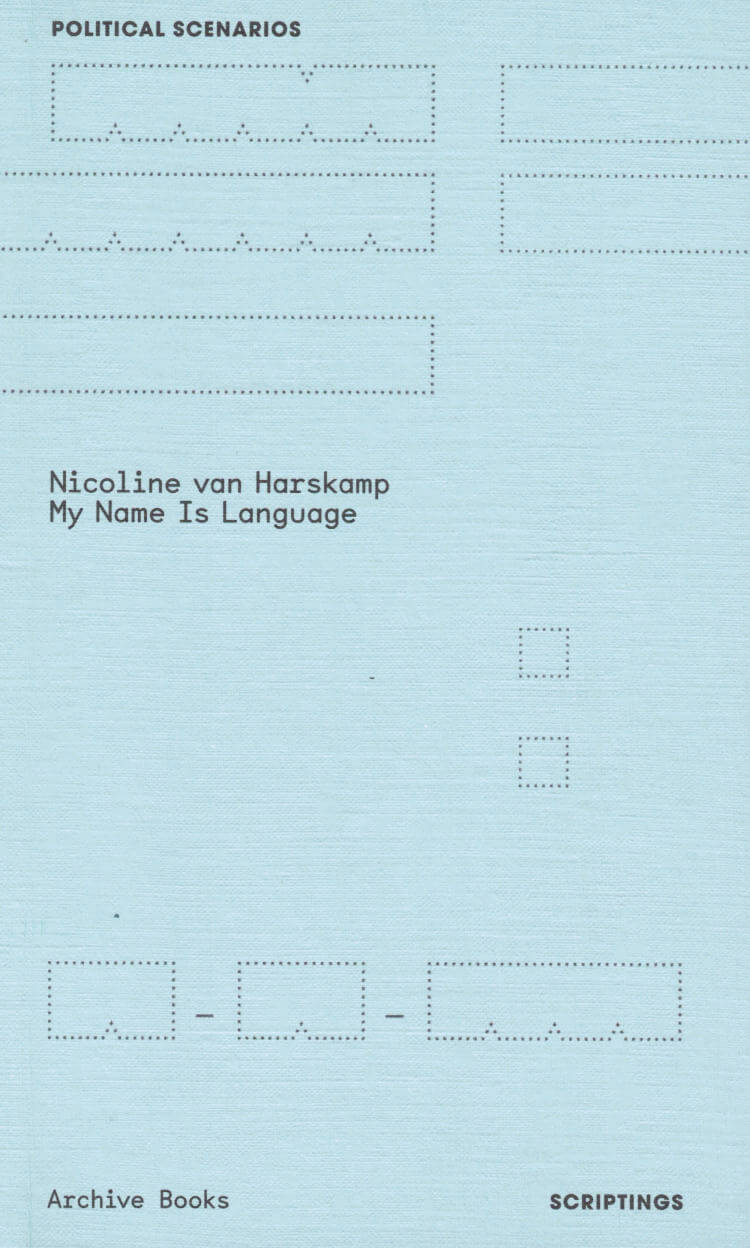Nicoline van Harskamp
Nicoline van Harskamp

My Name is Language
This publication explores the key tenets of artist Nicoline van Harskamp's research and practice, such as the contemporary use and modification of languages, a treatment of names as spoken language rather than spelled identity markers, and the practice of self-naming.
In the fictive worlds represented in this book, society is not centralized, not oversized, and self-naming is brought forward as a form of self-empowerment and resistance.
Central to this book are scripts by Nicoline van Harskamp, for the video work PDGN and a series of staged works titled My Name Is Language. A scholar of literary arts and performance culture, Avishek Ganguly reflects in his essay "Global Englishes, Rough Futures" on questions of translation, incomprehension, and untranslatability in van Harskamp's work. The book also includes a list of text-change algorithms that van Harskamp calls "distorters" and an excerpt from Woman on the Edge of Time (1976) by Marge Piercy.
Nicoline van Harskamp (born 1975 in Hazerswoude, Netherlands, lives and works in Amsterdam) is an artist whose work considers acts of language and solidarity, focusing on the constant evolution of spoken language, and its inevitable divergence from hegemonic norms. All of her works have a performative character and take the form of live staging, video, installations, and even publications, since her working process is characterised by the transformation of speech to writing and the other way around. She has presented her work and staged live pieces at art institutions, museums and the Internationally.
And more

Speculative Facts
Department of Speculative Facts
The Department of Speculative Facts connects two seemingly contradictory approaches: Speculation which attempts to think and act beyond existing knowledge and structures, and fact-checkers in search for a solid consensus on which our reality can be built. When stretching knowledge and speculating with fiction, what sense of responsibility is needed in times of democratized opinions and fake news? Learning from the other SF—Science Fiction—we think of speculation through facts, and facts through speculation, to situate truth culturally.
The backbone of this book is an e-mail exchange between two fact-checkers from the New York Times Magazine, which we handed over to artists to re-write, re-perform, and re-design. The publication includes the original letters, workshop scripts, as well as additional texts by philosophers, journalists, writers, and artists looking at new social contracts, with which we can anchor ourselves in the present.
Department of Speculative Facts is Lietje Bauwens, Quenton Miller, Karoline Świeżyński.
Contributions by Sepake Angiama, Lietje Bauwens (DoSF), Kate Briggs, Federico Campagna, Alex Carp & Jamie Fisher (NEW YORK TIMES MAGAZINE), Mette Edvardsen, Tristan Garcia, Maryam Monalisa Gharavi, Nicoline van Harskamp, Quenton Miller DoSF, Ingo Niermann, Michael Portnoy, Achal Prabhala with WIKIAFRICA, FACT FACTORIES, AFRICA CHECK, CHIMURENGA, Wolfgang Tillmans, Bob Trafford (FORENSIC ARCHITECTURE).
Design by Karoline Świeżyński